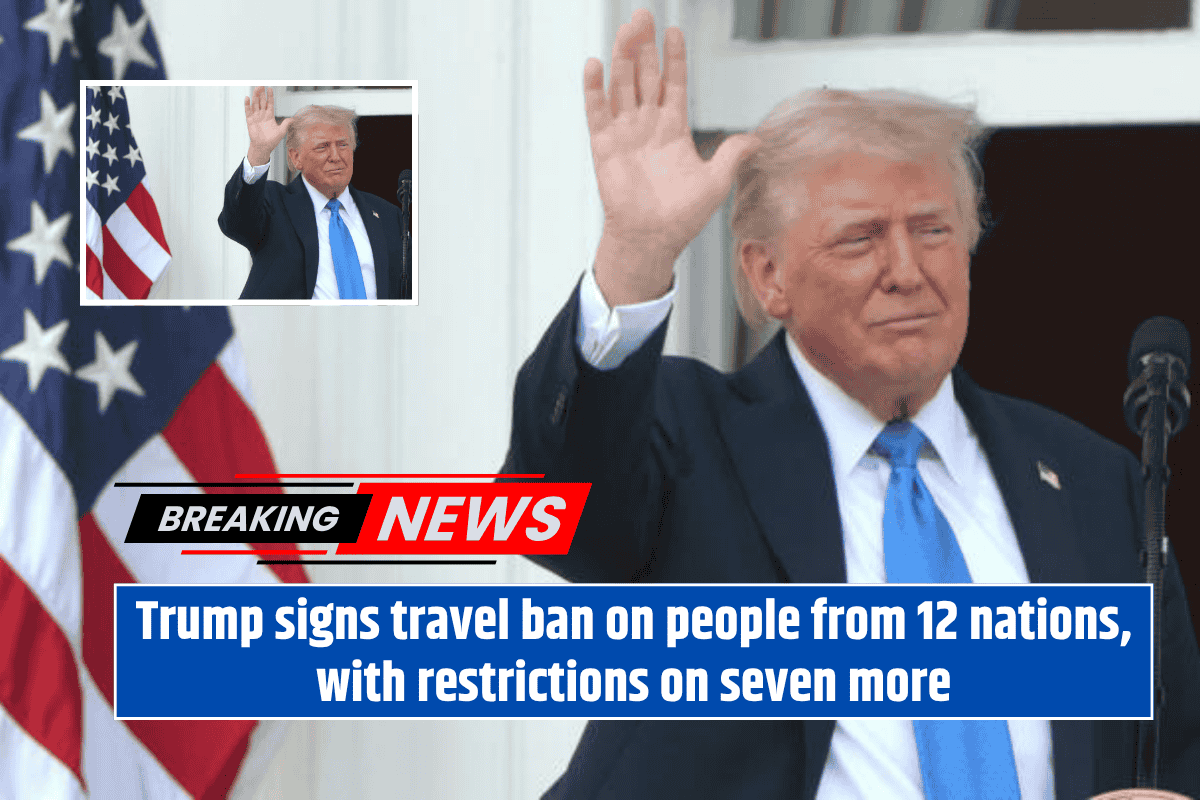In a move that has sparked significant attention, President Donald Trump signed a proclamation on Wednesday to implement travel restrictions affecting several countries, citing national security concerns. These new rules will restrict or ban the entry of nationals from twelve countries and partially limit entry from seven others, impacting both immigrants and travelers seeking to visit or settle in the United States.
Full Travel Ban: Affected Countries
President Trump’s new policy fully bans the entry of nationals from twelve countries, which includes both immigrants and tourists. The countries affected by the complete ban are Afghanistan, Myanmar, Chad, the Republic of the Congo, Equatorial Guinea, Eritrea, Haiti, Iran, Libya, Somalia, Sudan, and Yemen. This ban applies to people who wish to settle in the U.S. permanently as legal immigrants or those who want to enter on temporary visas.
Partial Travel Suspension: Seven Countries
In addition to the full travel ban, there is a partial suspension for travelers and immigrants from seven countries: Burundi, Cuba, Laos, Sierra Leone, Togo, Turkmenistan, and Venezuela. The restrictions here mainly focus on people seeking permanent residency in the U.S. through immigration visas and certain temporary visa holders.
Purpose of the Restrictions
The primary reason President Trump gave for the travel restrictions was to ensure U.S. national security. The White House argued that these countries posed a threat due to poor vetting systems for immigrants, high rates of visa overstays, and inadequate cooperation on deportations. Trump emphasized that these measures were necessary to protect the safety of American citizens from potential security risks.
Exemptions to the Ban
While the restrictions are significant, there are some exemptions. For example, U.S. permanent residents, the spouses and children of U.S. citizens who can prove their identity and relationship, and certain special categories such as Afghan allies who helped U.S. forces, diplomats, and dual nationals are not affected by the full ban. Additionally, some athletes and individuals with proper visas might still be allowed entry.
Background on the New Proclamation
The timing of this announcement comes shortly after a security incident in Boulder, Colorado, where an Egyptian national, who had overstayed his tourist visa, was involved in an attack. Although Egypt was not included in the new travel restrictions, the U.S. government has directed officials to review Egypt’s vetting process.
Comparisons to Previous Travel Bans
This new travel restriction mirrors some of the travel bans implemented during Trump’s first administration. In 2017, Trump signed an executive order targeting several predominantly Muslim countries. The policy sparked massive protests and legal challenges but was eventually upheld by the U.S. Supreme Court. Despite opposition, the Trump administration continued to refine and expand the restrictions throughout his first term.
Potential for Future Changes
The president mentioned that the list of banned or restricted countries could change over time. If certain nations improve their security and vetting measures, they could be removed from the list. On the other hand, new countries could be added if additional security threats are identified.
President Trump’s decision to sign the new travel restrictions demonstrates his commitment to protecting national security. However, the proclamation has raised questions about fairness and the potential for legal challenges. As the situation unfolds, it will be interesting to see how these measures affect U.S. foreign relations and immigration policies in the future.
